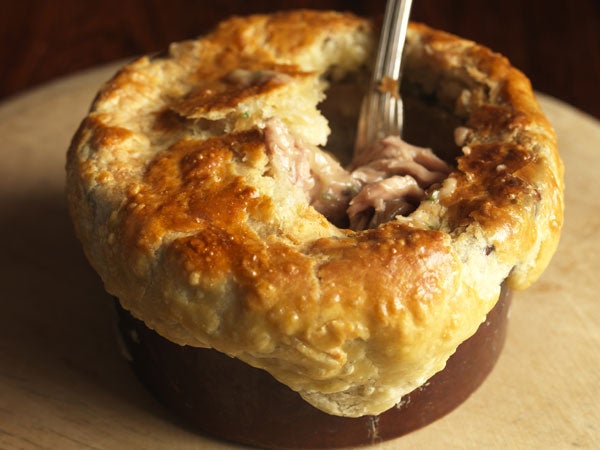Your support helps us to tell the story
From reproductive rights to climate change to Big Tech, The Independent is on the ground when the story is developing. Whether it's investigating the financials of Elon Musk's pro-Trump PAC or producing our latest documentary, 'The A Word', which shines a light on the American women fighting for reproductive rights, we know how important it is to parse out the facts from the messaging.
At such a critical moment in US history, we need reporters on the ground. Your donation allows us to keep sending journalists to speak to both sides of the story.
The Independent is trusted by Americans across the entire political spectrum. And unlike many other quality news outlets, we choose not to lock Americans out of our reporting and analysis with paywalls. We believe quality journalism should be available to everyone, paid for by those who can afford it.
Your support makes all the difference.Pheasants can be tricky birds to roast. They often come out the oven overcooked and dried-up rather than nice and pink. Slow-cooking them is in my opinion a much better option, and then you can use the meat for a soup, a tagine or a pie.
2 pheasants trimmed of all their meat and cut into 3-4cm chunks
500ml good cider
2 cloves of garlic, peeled and crushed
3 juniper berries crushed
1tsp thyme, leaves removed and chopped
1 bay leaf
Vegetable oil for frying
60g butter
2 onions, peeled, halved and finely chopped
3tbsp plain flour
tbsp tomato purée
1 litres dark meat stock
Salt and freshly ground black pepper
24 or so roasted and freshly shelled chestnuts or vacuum packed or canned ones, halved
For the pastry
225g self-raising flour
1tsp salt
85g shredded beef suet
60g butter, chilled and coarsely grated
1 medium egg beaten, to glaze
Put the pheasant meat into a stainless steel or ceramic bowl with the cider, garlic, thyme, juniper and bay leaf. Cover and marinade in the fridge overnight.
Drain the pheasant meat in a colander, reserving the marinade, and dry the pieces on some kitchen paper. Heat the vegetable oil in a heavy frying pan, lightly flour the meat with a tablespoon of the flour, season with salt and pepper and fry on a high heat a few pieces at a time until nicely browned.
Meanwhile, heat the butter in a large, heavy-bottomed saucepan and gently fry the onions for a few minutes until soft. Add the flour and tomato purée and stir over a low heat for a minute. Slowly add the marinade, stirring constantly to avoid lumps forming.
Bring to the boil and simmer until it has reduced by half. Add the stock and the pieces of pheasant, bring back to the boil, cover with a lid and simmer gently for about an hour until the meat is fairly tender.
Once the meat is cooked, the sauce should have thickened sufficiently and reduced, so it's just coating the meat. If not, dilute a little cornflour in some water and stir into the sauce and simmer for a few minutes. Add the chestnuts, transfer the meat into a large pie dish and leave to cool.
Meanwhile, make the pastry: mix the flour and salt with the suet and grated butter. Mix in about 150-175ml water with the egg to form a smooth dough and knead it for a minute. Roll the pastry on a floured table to about 1cm thick and cut out to about 2cm larger (all the way round) than the pie dish, or dishes, you are using.
Brush the edges of the pastry with a little of the beaten egg and lay the pastry on top, pressing the egg-washed sides against the rim of the dish.
Cut a small slit in the top of each pie to allow steam to escape, and brush with beaten egg. You can put a trim around the edge of the dish with a strip of leftover pastry. Leave to rest in a cool place for 30 minutes.
Preheat the oven to 200C/gas mark 6. Bake for 45 minutes, or until the pastry is golden. Serve with greens or mashed root vegetables such as celeriac or parsnip and/or small boiled potatoes.

Join our commenting forum
Join thought-provoking conversations, follow other Independent readers and see their replies
Comments